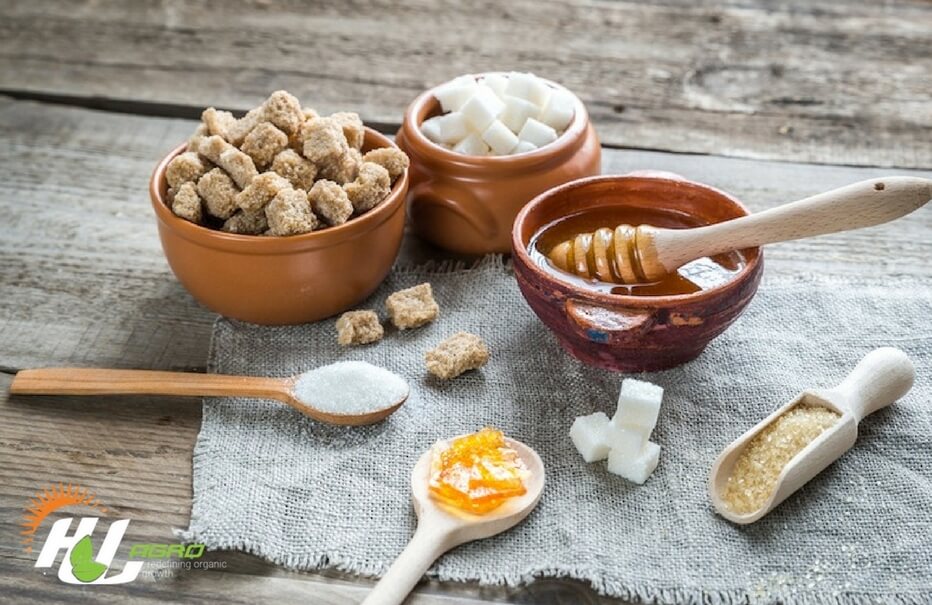India is the second largest producer of sugar and its largest consumer in the world – much of it being used in sweetmeats. The greatest challenge that the sweetener market in India faces in trying to expand the user base is the resistance Indians have to change from what has essentially been their way of life for centuries – even when the issue is health related. Sometimes social and peer pressure also doesn’t allow an individual to follow his regimen strictly. With growing awareness of the link between diet and health the problem of obesity, consumer concern over sugar levels in the diet is forcing a worldwide trend towards cutting down on sugar. The shift away from sugar is still years away but a trend towards low-calorie sweeteners is occurring. The world is turning, to artificial sweeteners and substitutes. The market for sugar substitutes is being fuelled globally by new-age safe sweeteners.
The sweetener market In India today stands at approximately Rs.150 crores with a double-digit growth. This is minuscule, looking into the number of diabetics and pre-diabetics in India. With the changed regulatory scenario allowing the use of sweeteners in everyday consumables, the market is bound to grow. With the entry of new and safer molecules, the artificial sweetener industry in India could witness large volumes.
The sweetener market is segmented into sugar, high-intensity sweeteners (HIS) and high-fructose corn syrup. HIS & high-fructose corn syrup is the fastest growing segment at the moment due to the rising health concerns among people. Aspartame and Sucralose are the most famous sweeteners in the HIS segment. Stevia is also seeing a major demand in the natural sweeteners category.
The low-calorie sweetener business has evolved rapidly over the last 20 years. Whether this evolution has been in response to market forces or is more a case of ‘technology push’ is, perhaps, an arguable point. Also, the range, composition, and quality of products that rely on low-calorie sweeteners, particularly ‘diet’ or ‘light’ soft drinks, have changed dramatically during this time. Today, it really is possible to deliver, to a significant consumer population products whose acceptability matches or even exceeds that of their full-sugar equivalents. The increasing incidence of obesity and consequent growing calorie consciousness has sparked off a growing consumer base of low-calorie products. The key factor driving the low-calorie market is the consumer demand in international markets.
On the contrary in India, the consumption of sweeteners has been traditionally fuelled by the increasing diabetic segment (with usage being restricted to tea/coffee). Till few years, back 90% of the consumption of sweeteners was by diabetics only for controlling blood sugar. Sugar substitutes/artificial sweeteners is the smart way to cut on excess calories of sugar (sucrose) and control your calorie intake. However, with the increasing incidence of lifestyle diseases like cholesterol, obesity, etc. has given rise to a corresponding awareness for calorie consciousness amongst urban individuals and the growth in the Indian sweetener market today is essentially being driven on one of the two following factors:-
- Increasing health and calorie consciousness amongst urban individuals leading sedentary high-pressure lifestyles, characterized by erratic/unhealthy eating habits and dependence on junk food or high-calorie diet.
- Increasing incidence of obesity-linked lifestyle diseases like cholesterol, diabetes, cardiovascular diseases, etc., in which in terms has given rise to change in lifestyle and dietary habits creating the need for adopting a need for calorie control in one’s daily diet
A huge untapped market lies in the usage of artificial sweeteners in the food and beverage market. Beverages are the biggest market for sugar alternatives, but many products such as bars, yogurt, and baked goods also benefit from low-calorie substitutes. In India, while consumption of artificial sweeteners is only 2% in the middle-income group, it is 70% in the high-income group. Tabletop sweeteners are popular in India with high-profile promotional campaigns indulging the health-conscious to dump sugar and choose its alternatives. Brands such as Equal, a global product from Chicago-based Merisant, Sweetex from Boots Piramal, Sugar-Free TM from Zydus Cadila and Sweet’Nlow from New York’s Cumberland Packaging Corp are popular in India.
Low-calorie sweeteners are expected to gain popularity as they help in lowering high blood pressure and maintaining the blood glucose level for diabetic patients. Additionally, massive increase in the use of ready to eat foods and regulatory laws driving the growth of the global low-calorie sweeteners market. Increased acceptance of low-calorie sweeteners as a substitute for conventional sugar has increased its application scope in the food industry. All these factors will contribute to the estimated CAGR of 3.8% of low-calorie sweeteners market during the forecast period 2018-2023.
It is difficult for an Indian to resist his penchant for sweet food. With increasing safer options available which promise better taste with fewer calories, we can be sure that our love for sweetmeats is going to stay. Pharma majors are eyeing this category and are keen to add sweeteners to their diabetic product portfolios. The industry is discovering more options and looking forward to introducing newer and safer alternatives for the healthy-minded consumers who can look forward for sweeter days ahead.
While artificial sweeteners & sugar substitutes may help with weight management, they should be used only in moderation. Often, natural sweeteners are promoted as healthier options than processed table sugar or other sugar substitutes. However, even these often undergo processing and refining.
Just because a food is marketed as sugar-free doesn’t mean it’s free of calories. If you eat too many sugar-free foods, you can still gain weight if they have other ingredients that contain calories.






